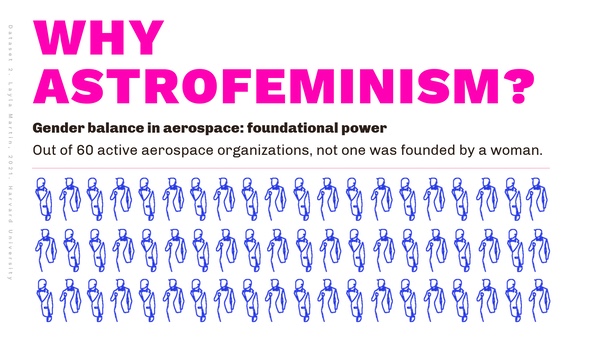Why Astrofeminism?by Layla Martin Monday, June 21, 2021
 There are few companies in the space industry founded by women, just one example of the field’s gender gap.
There are few companies in the space industry founded by women, just one example of the field’s gender gap.The ancient universal practice of studying the moon, planets and stars from Earth helped to define primordial calendars and shape our earliest conception of gods, spirits, seasons, and tides. Today, space-based assets educate and connect humanity as well as revealing information that furthers efforts to mitigate anthropogenic climate change. At its best, what space offers us is the possibility to evolve the human condition. The power of space has benefited the United States on a global scale for decades, inspiring generations while expanding democratic soft power. To illustrate, in every single place around the world I’ve spent time in, from Akiruno, Tokyo to Zanzibar, Tanzania, I’ve observed local people proudly wearing NASA t-shirts! From a non-scientific perspective, images of space reveal patterns of light and color that are so beautiful it’s difficult to describe them as anything other than magical. Yet, they are in fact, very real!
https://www.thespacereview.com/article/4196/1